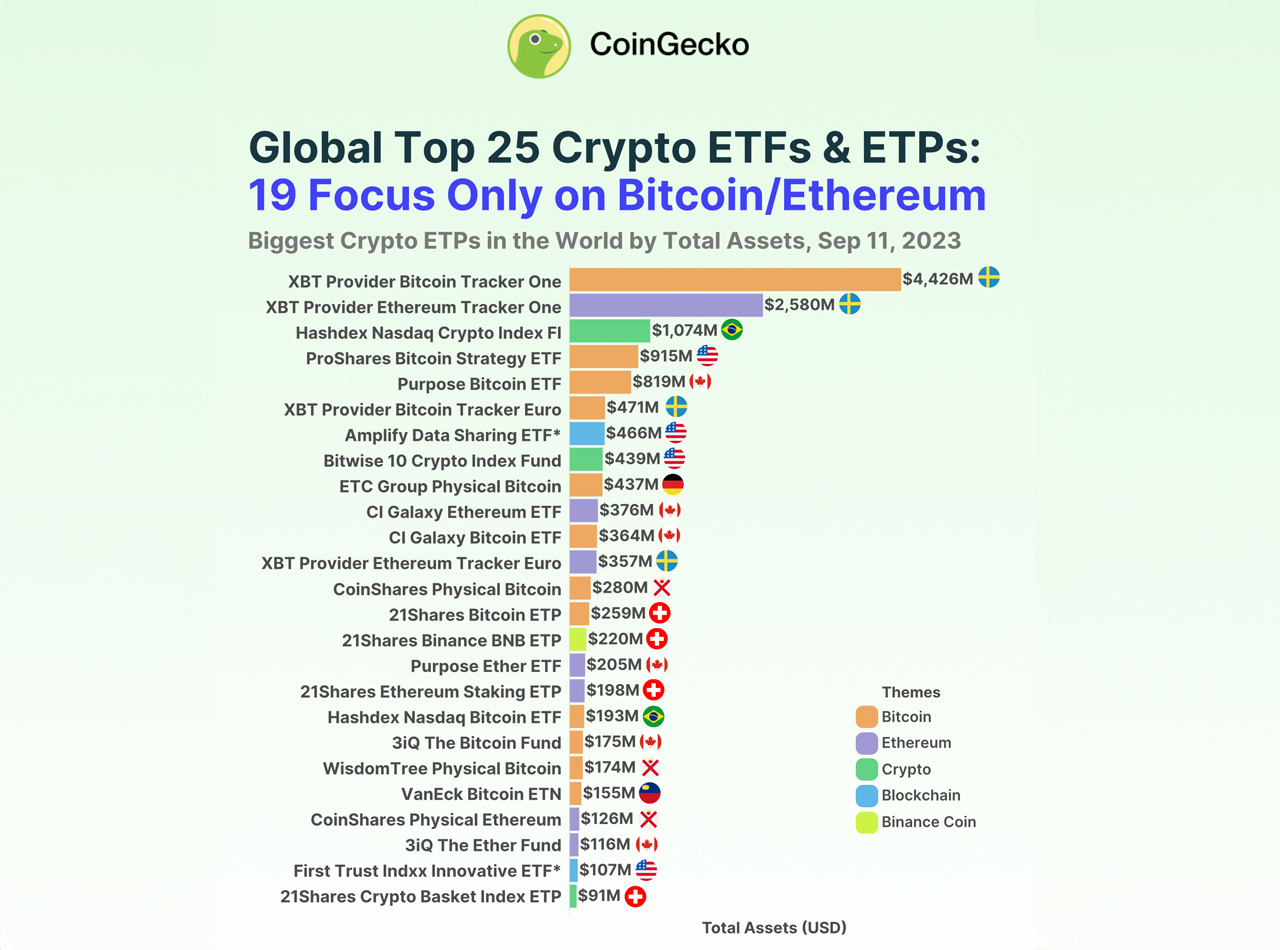An ETF is an investment fund traded on stock exchanges, similar to stocks. A bitcoin ETF doesn’t directly trade bitcoin; rather, it tracks bitcoin futures contracts or holds private keys associated with the cryptocurrency. This setup grants regular investors and institutions access to bitcoin exposure without dealing with cryptocurrency exchanges or wallets.

The mechanics of a bitcoin (BTC) exchange-traded fund.
There are two main types of bitcoin ETFs: futures-based and spot bitcoin ETFs. Futures-based bitcoin ETFs, such as the Proshares “Bitcoin Strategy ETF,” which debuted in 2021, don’t directly invest in bitcoin. Instead, they track bitcoin futures contracts traded on platforms like the Chicago Mercantile Exchange (CME). A spot bitcoin ETF directly holds actual bitcoin assets on behalf of its investors. Unlike futures-based funds, it provides direct exposure to the crypto asset’s real-time price movements.

Coingecko’s top 25 ETFs and ETPs. The list excludes Grayscale’s fund because it is traded OTC.
Currently, spot bitcoin ETFs are unavailable in the U.S. but some expect that to change in the near future. Investors, however, can tap into Canada’s “Purpose Bitcoin ETF” – a fund with physical backing. Moreover, there’s Europe’s “XBT Provider Bitcoin Exchange Traded Note,” listed on their local stock exchanges. Yet, in the U.S., these spot bitcoin ETFs encounter significant legal obstacles and still await SEC endorsement.
Until a spot bitcoin ETF receives U.S. approval, close alternatives include the Grayscale Bitcoin Trust (GBTC) and products from XBT Provider. The Grayscale Bitcoin Trust is a trust holding bitcoin, with shares traded over-the-counter (OTC). As of September 2023, it managed assets worth more than $16.53 billion. XBT Provider offers notes like Bitcoin Tracker One, with more than $4.43 billion in assets. Though not strictly ETFs, these products resemble aspects of a spot bitcoin ETF.
The allure of bitcoin ETFs is evident: They provide uncomplicated bitcoin exposure as a security without the intricate storage and security requirements of the actual cryptocurrency. As bitcoin becomes more mainstream, some believe a U.S. spot bitcoin ETF might attract a significant surge of institutional investment in digital currencies.
Conversely, a bitcoin ETF might allow for leveraging fictional bitcoin supplies to control futures positions. If prices climb rapidly, a fictitious supply of paper bitcoin could be used to control them. Nontransparent fractional reserve practices might emerge, skewing prices as seen in traditional markets. But with BTC’s transparent blockchain, future ETFs might need to prove 100% reserves.
免责声明:本文章仅代表作者个人观点,不代表本平台的立场和观点。本文章仅供信息分享,不构成对任何人的任何投资建议。用户与作者之间的任何争议,与本平台无关。如网页中刊载的文章或图片涉及侵权,请提供相关的权利证明和身份证明发送邮件到support@aicoin.com,本平台相关工作人员将会进行核查。




